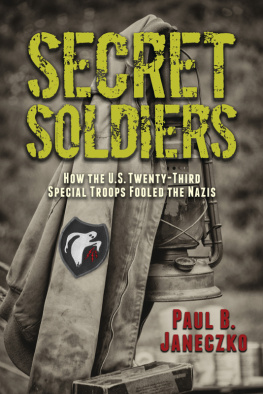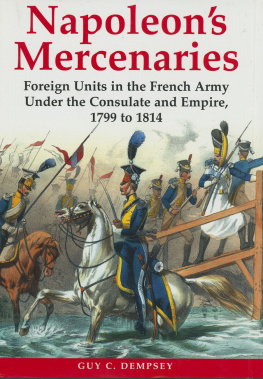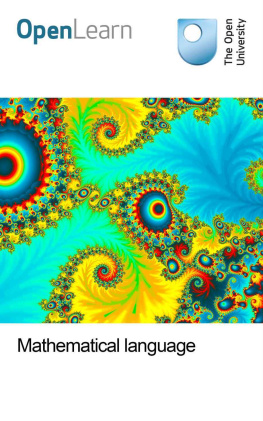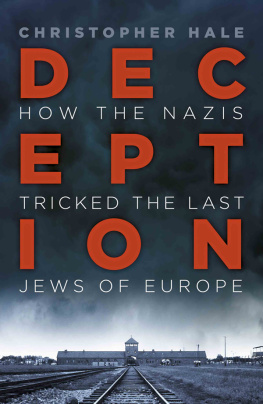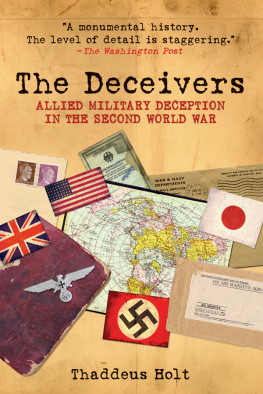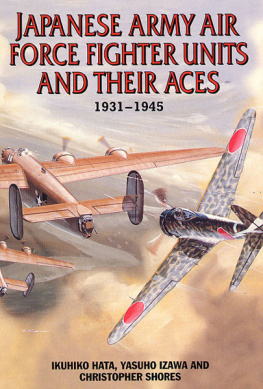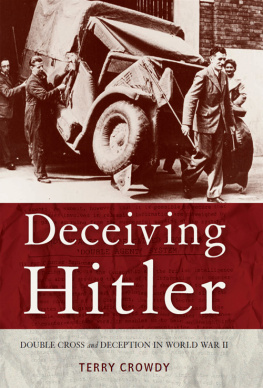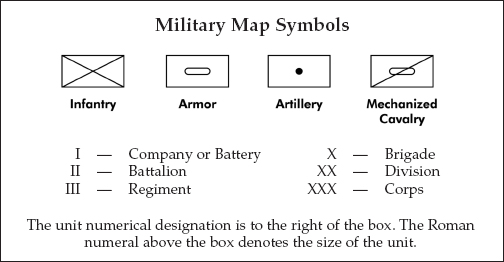Authors note: All materials declassified under program number NND 735017 and NND 730029.
Photo Credits: Unless otherwise noted all photos are from the U.S. Army.
Published by
CASEMATE
908 Darby Road, Havertown, PA 19083
Copyright Jonathan Gawne 2002
All Rights Reserved. No part of this publication may be reproduced, stored in a retrieval system or transmitted in any form or by any means, electronic, mechanical, photocopying, recording or otherwise, without prior permission in writing from the Publishers.
ISBN 0-9711709-5-9/eISBN 978-1-935149-92-7
Cataloging-in-Publication data is available from the Library of Congress.
Printed and bound in the United States of America.
Foreword
It is a great pleasure and a distinct honor to provide this contribution to what I consider the finest work yet written on the 23rd Headquarters Special Troops. It documents the story of the first and possibly only army unit organized for tactical deception. This story is a treasure for history and for the future.
What was the 23rd?
Army Material Systems Analysis at Aberdeen Proving Ground once stated: The 23rd Headquarters was truly an unorthodox unit. Never before had there been such a unit, one developed specifically for tactical deception. During the brief period the unit spent in action, it served with more armies and corps than any other unit. It also perhaps operated over a larger area, serving in France, Belgium, Holland, Luxembourg, and Germany. Rarely, if ever, has there existed a group of so few men which had so great an influence on the outcome of a major military campaign.
Assembling the true story of the 23rd was not easy and required years of painstaking research. The operations of the 23rd were wrapped in secrecy. We used oral orders instead of written ones; the detachments were often fragmented; and even personnel deployed in operations remained uninformed as to the big picture. After reaching Metz, the pace became very hectic. Diaries were prohibited. Over half a century of being classified did not help our memories. At a reunion in Erie, Pennsylvania, in 1997, Congressman Phillip English said, I cant believe that you men were drafted, served in this unit, were discharged and told to shut upand you did!
Because our peacetime army had paid no attention to deception, the CO and staff of the 23rd faced an unknown subject without any help from manuals, guidance, or orders. As West Point officers, drilled in the code of Duty, honor, country, we had a hard time thinking in terms of deception. After all, our training had been based on trust and integrity. There was no advance understanding of how to deploy the units under the 23rd, although the men were ready and capable. We learned on the job, and we learned from gifted and talented civilian soldiers like Captain Frederick E. Fox, who came from a civilian career in show business. Foxs feeling was, You old fuddy-duddies stand aside because we are going to be a traveling road show with impersonations and imitations of units, generals, and colonels, even if it violates your dumb army regulations.
The greatest assets of the unit were the intelligent civilian soldiers specially screened for this assignment. Their past careers and interests in art, design, theater, acting, radio, electronics, and other fields provided a valuable and pertinent background for the imitation of real units. Each Army unit (up to and including a 15,000-man division) has a distinct character, personality and atmosphere. We developed the term special effects to denote and describe the use of shoulder patches, bumper markings, command post signs, road signs, and other equipment useful to depict a certain unit with its specific atmosphere. The short life of the 23rd (18 months, from 20 Jan. 1944 to Aug. 1945), the secrecy, and the concentrated activity mitigated against providing awards and decorations for the men. It was a command failure that these soldiers did not receive the recognition they deserved for their considerable contributions to our country.
What did we learn from our wartime experiences?
Cover and Deception:
Cover is making the enemy believe that our hostile actions are harmless. Deception is seeking to make the enemy do something, or do nothing, to our advantage.
And the simple thinking for portrayal of a unit:
A. Make the enemy believe that a real unit is in a false LOCATION
B. Make the enemy believe that a real unit has false STRENGTH
C. Gain advantage by our choice of the TIME
The means and methods of deception can be grouped under such headings as visual, communications, sonic, radio, and even smell.
Implementation is the most important and difficult part of any deceptive operation. It also requires the most work. An analogy might be a trapper who wishes to catch a fox. First he must outwit the clever fox! We would like to know each and every means the enemy uses in order to gather information, but we are never certain or sure. We can select a means for passing false information but we must do it in a manner that the enemy will not suspect it is false. The more channels we use to pass this information, the better. An enemy collects bits of information from many sources and collates the bits to produce intelligence.
Deception is called an art of warfare; one that deals with the minds of the enemy. There are no guarantees. We do the best we can with estimates, guesses, hope, luck, evaluations, risks, and just plain ordinary guts. Deception should help to gain victories but it must not hurt. We live in a changing world and what worked before in tactical deception may not work now. A satellite can now read a motor vehicle license plate from space, so we must be ready to outsmart it by turning the license on edge or displaying a false license. For every new means of gathering information there is also a new avenue for passing false information.
Our many years of silence on deception have denigrated this age-old art of warfare. In past ages there was the horse of Troy in 1200 B.C., the battle of Hastings in 1066 A.D., and our own Revolutionary War, in which George Rogers Clark in 1779 opened the northwest territories for the U.S. by deception, preventing the present border of Canada from being south of Chicago.
We need continuous thinking (not silence) on deception. And we need teaching in our service schools and funds for research and development. Let us not repeat the mistakes of the past. We have both the know-how and the knowledge of tactical deception. Lets use it, not lose it.
Lets Roll.
Clifford G. Simenson,
Colonel USA, Ret.
Wartime S-3, 23rd Special Troops

Even after the finish of the European war it will be undesirable to publish details of deception practiced on the Germans by the Allies.
General A. T. Jones, British Joint Staff Mission




